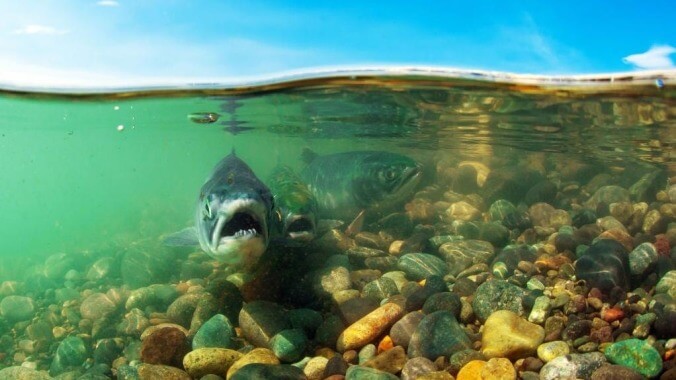The future of environmentally friendly plastics may come from fish sperm
Scientists at China's Tianjin University have created a bioplastic made in part from salmon sperm

The 21st century is a strange time to be alive. Not only do we exist in an age of artificial intelligence, hoverboards, and dancing robots, but we’re also witnessing other incredible scientific discoveries, too—like, for example, the recent development of bioplastics made, in part, from fish cum.
As Vice explains, scientists working at China’s Tianjin University recently published an article describing their creation of a more environmentally friendly form of plastic that’s “made with DNA from salmon sperm, among other chemicals.” The process used to make this swampy plastics cocktail involves dissolving “strands of DNA from salmon sperm” in water, mixing them with chemicals, and then creating “a gel that can be molded into various shapes” before being freeze-dried into place.
These scientists made a fish gunk mug with this “DNA plastic” to show off their work and have said the material creates “97 percent less carbon emissions than manufacturing polystyrene plastics” during its production. It’s also “very recyclable” and made “from the extraction of raw material from biorenewable sources.”
In short, it’s an exciting area of study, and not just from the perspective of the horned-up salmon providing DNA for the scientists. If fish sperm does, indeed, provide a more sustainable way for humanity to use plastics, we’re willing to get used to using freeze-dried spunk mugs, cum cutlery, and whatever else our aquatic friends see fit to provide us with between their leisure time flying out of salmon cannons.
And, naturally, we’re also onboard with the obvious next step of building huge banks of underwater screens that constantly stream whatever horrible fish porn the salmon need in order to get down to work and provide us the raw materials necessary to save our planet.
Send Great Job, Internet tips to [email protected]